Cime de Linière (1368 m) situated 2,5 km southwest of the summit of Mangiabo (1821 m) can be reached from the village of Moulinet (800 m) in the Bévéra River Valley. East of Bévéra, the verdant and steep mountain flanks are mostly forest covered. At Moulinet, the western border of the Mercantour National Park follows the river.
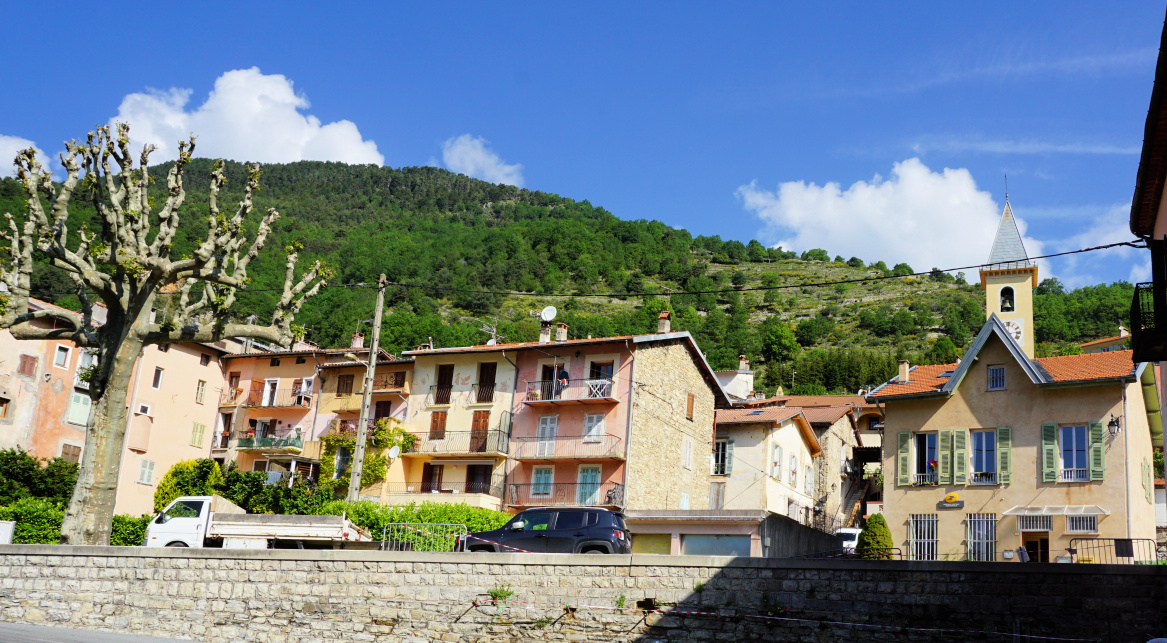 |
| Moulinet village |
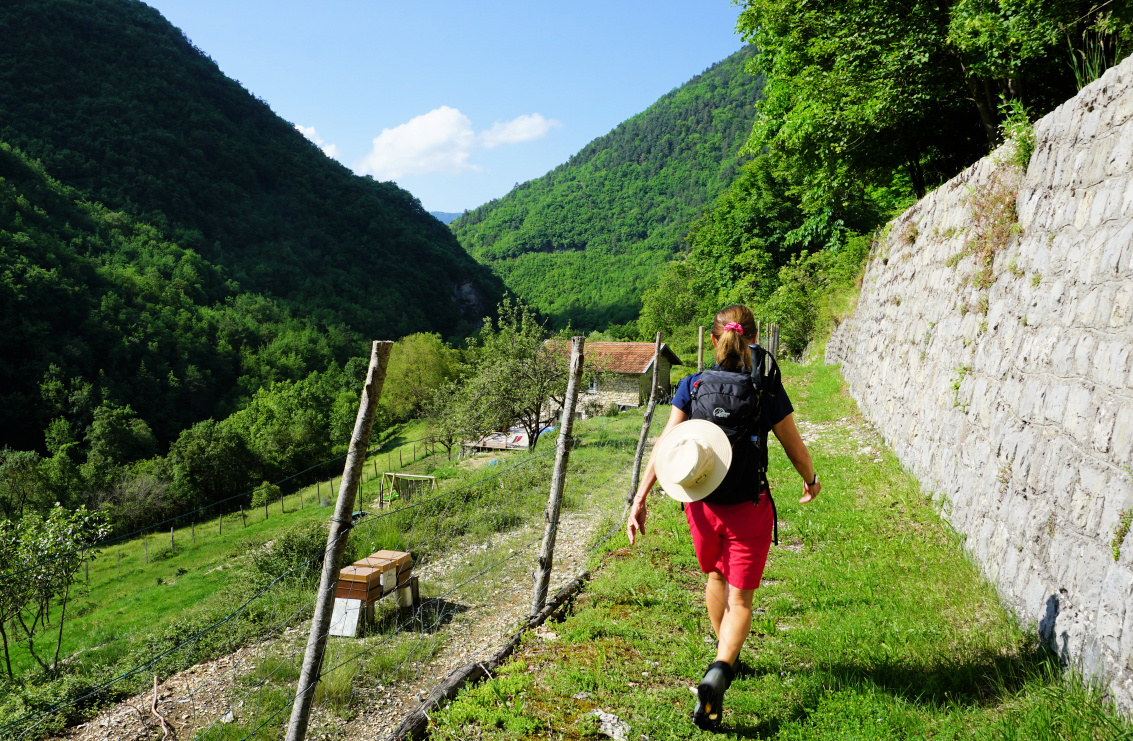 |
| Leaving signpost#20 |
 |
| Crossing Bévéra |
From the village square with limited parking, we walked about 400 m along the D2566 road to signpost #20. We passed some properties and a chapel, and entered the Mercantour Park. We descended to a bridge crossing the Bévéra and followed its tributary named Gouargas to signpost #21 where we forked left, passed a solitary house (Sapetta on the map). We continued to the east, and started to ascend along a narrow trail to l’Avenquet where we passed ruins of ancient dwellings. We were off the beaten track; only wild boars had been digging the path.
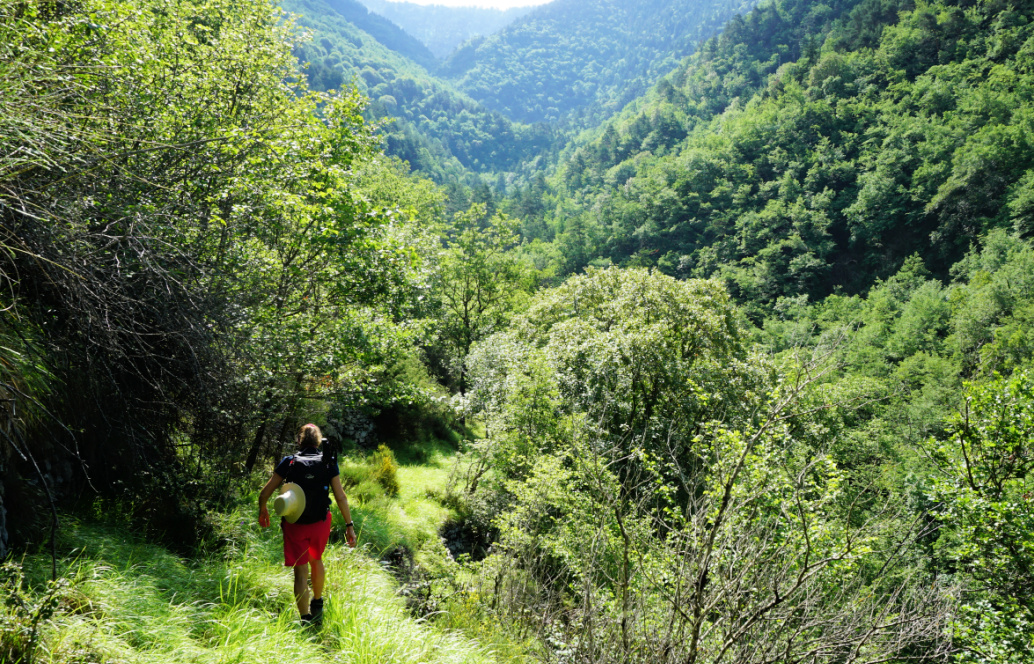 |
| Trail after Sapetta |
 |
| Bévéra Valley |
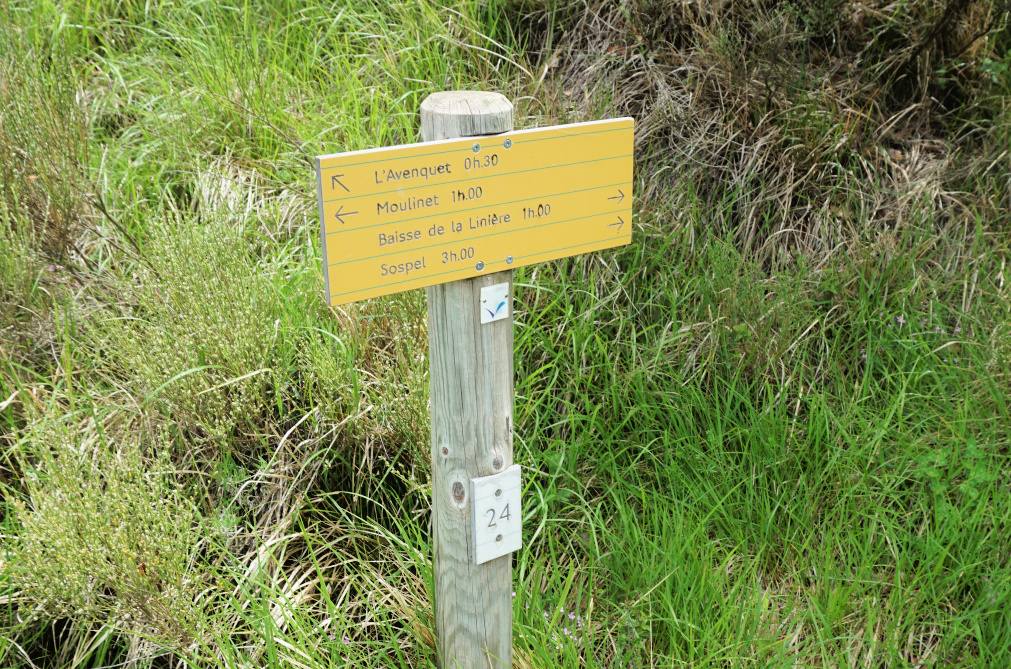 |
| Crossroads #24 above Moulinet |
We crossed another stream, turned almost 180°, and headed west to signpost #24 where we made another 180° turn and climbed to Baisse de Linière (1345 m).
The path to the nearby summit was not marked and hidden under the grass at the clearing but soon became visible in the woods. From the rather flat mountain top we had best views to the south with the coastal peaks between Sospel and Menton visible in spite of the passing afternoon thunderstorms. There was a shepherd’s shelter in bad shape. Not one of the most impressive summits, but nevertheless worth a visit and above all a good springtime exercise!
We descended back to signpost #24 where we took the shorter and more frequently used path back to Moulinet.
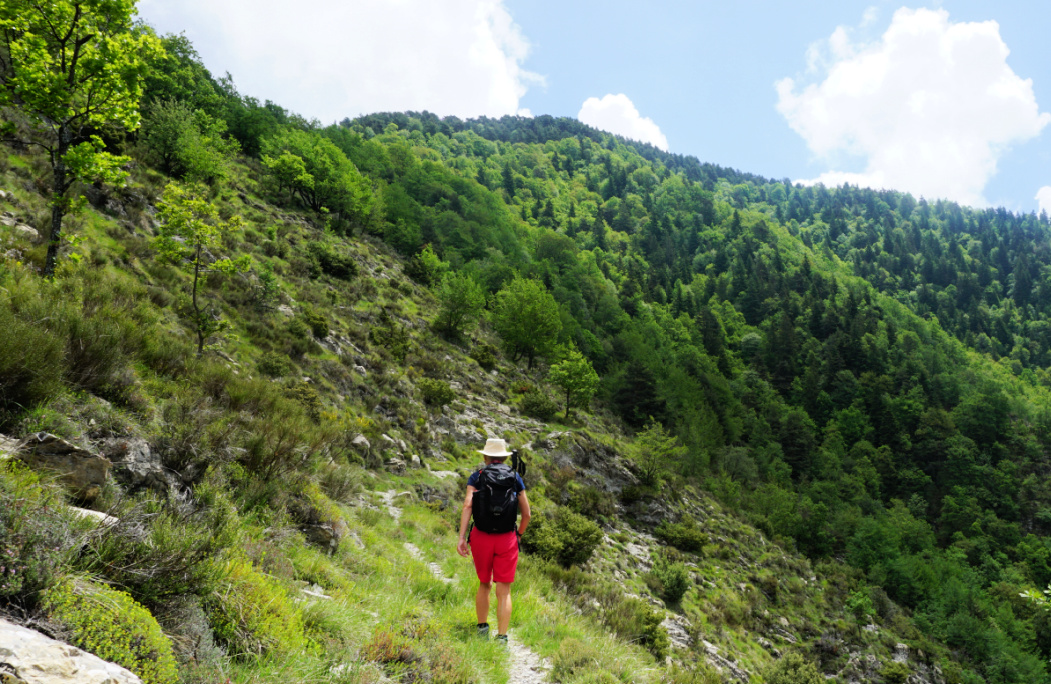 |
| Towards Baisse de Linière |
 |
| Near Baisse de Linière |
 |
| Cime de Linière hike track |
 |
Red mullet with black olives and spinach
|
Red mullet, rouget, is often sold as fillets in Nice. It is a tasty and colourful fish which can be prepared quickly. Red mullet fillets make a delightful light lunch with sautéed spinach and some whole wheat or rye bread.
2 servings
About 250 g red mullet, rouget, fillets
Olive oil
2 tbsp. sliced black olives
2 blocks of frozen spinach leaves
3 tbsp. pine nuts
1 spring onion, sliced
Warm 2 tbsp. olive oil in a frying pan over medium heat and sauté the frozen spinach blocks on both sides until defrosted and all the liquid has evaporated. Add the pine nuts, stir and let simmer for a few minutes.
Meanwhile warm 1 tbsp. olive oil in a non-stick frying pan over medium heat. Sauté the mullet fillets for about 4 minutes on both sides if they are large. If they are very small, sauté them on the skin side only for about 5 minutes. The fish is done when it is opaque.
Divide the spinach on the plates and decorate with spring onion slices. Place the red mullet fillets on the plates and sprinkle with the olive slices. Serve with lemon wedges, a side salad, and some good bread for a balanced lunch.
 |
| The Rock of Monaco seen from GR trail |
We have hiked to Monaco from La Turbie a few times before. It is one of the great coastal itineraries on the Riviera. This time we wanted to combine the hike with a visit to the Oceanographic Museum with a lunch on their roof terrace.
 |
| La Turbie #619 |
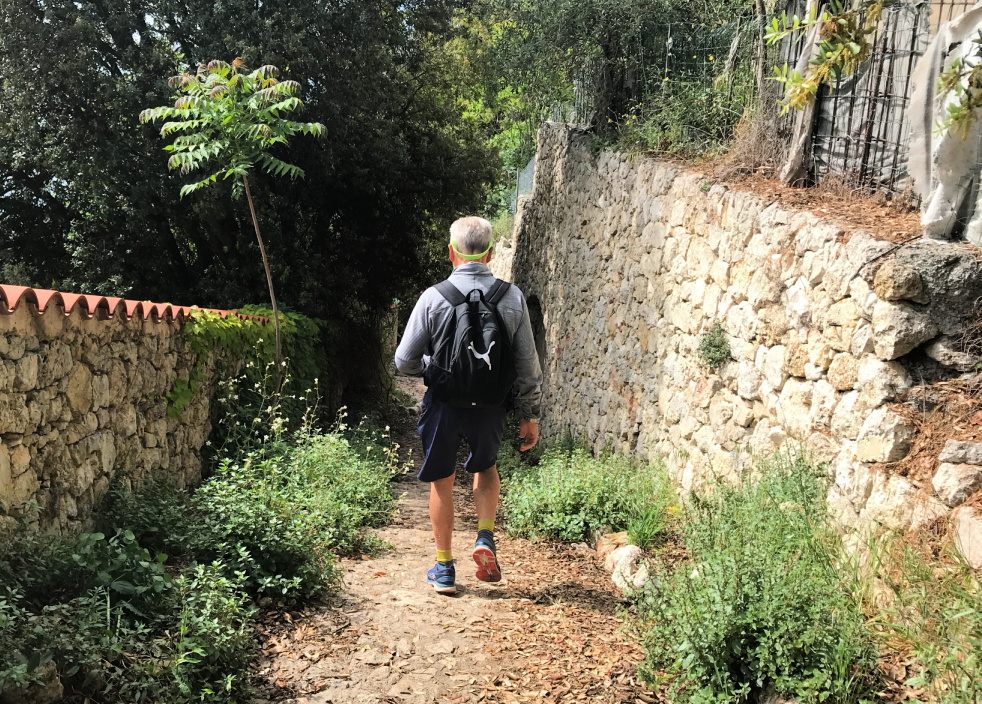 |
Between La Turbie and Monaco
|
We descended first along paved alleys, along the Roman Path, chemin romain (signposts #618,619,617 and 615) then along some stretches along a trail. At #615 we briefly merged with the GR51b trail, to signpost #615b where we forked left and followed a steep street named Chemin de la Turbie using pedestrian shortcuts when possible. We crossed the D6007 road and descended along stairs in Beausoleil in the Les Moneghetti neighbourhood, forked left at a soccer field (Stade des Moneghetti) and reached the Monaco railway station in about an hour.
The preparations for the approaching F1 Grand Prix were in full swing, and some pedestrian routes were blocked. We walked past the casino and descended further to the port. It was a religious holiday, and there were a lot of visitors from different parts of the world climbing along the stairs to the Rock and the palace square.
 |
| Chemin Romain below La Turbie |
 |
| Signpost#617 to Monaco |
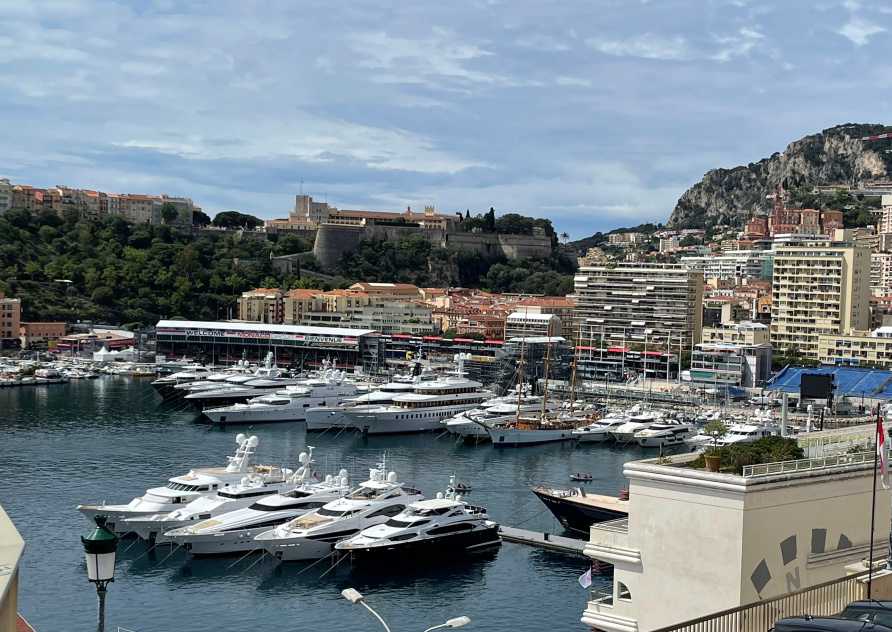 |
| Monaco port area |
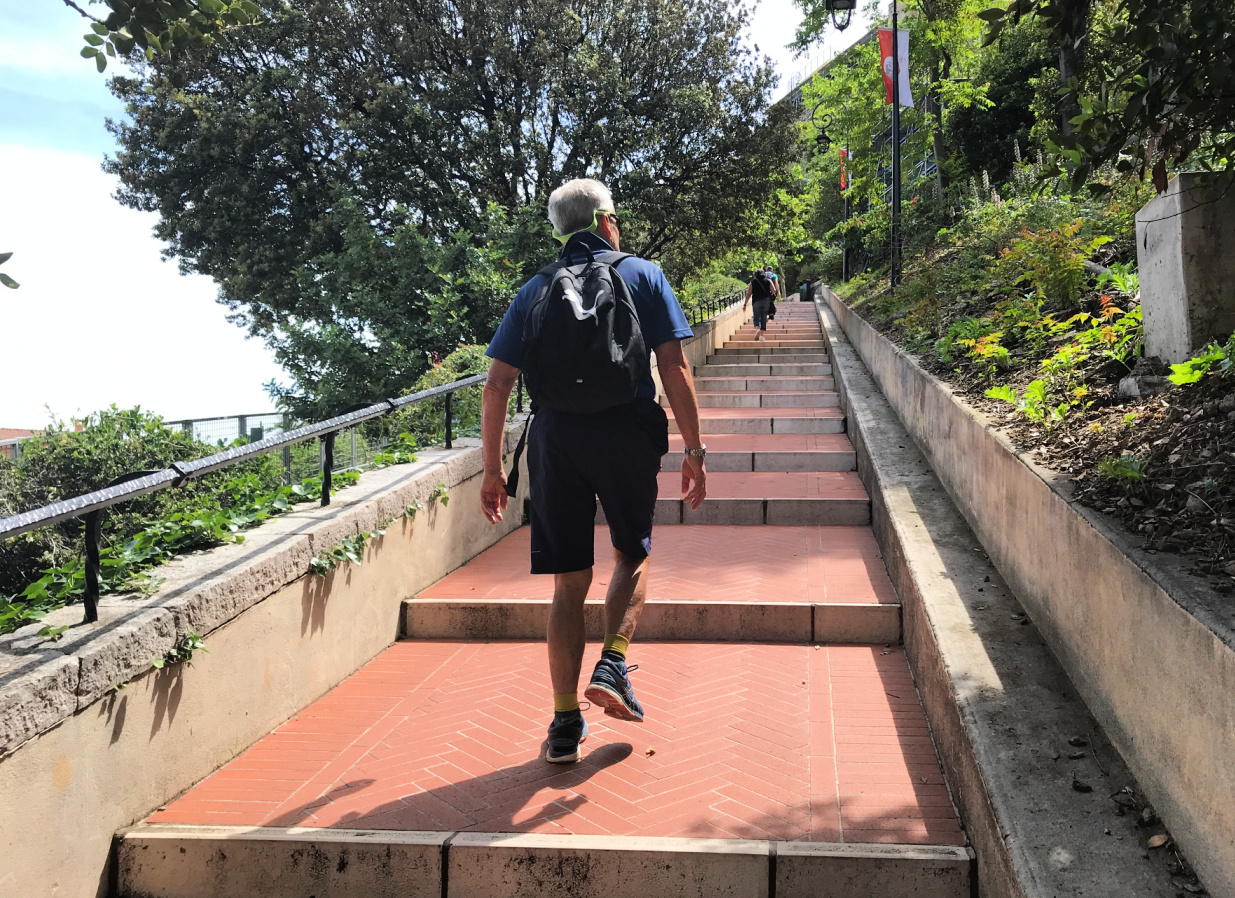 |
| Stairs to the Rock MC |
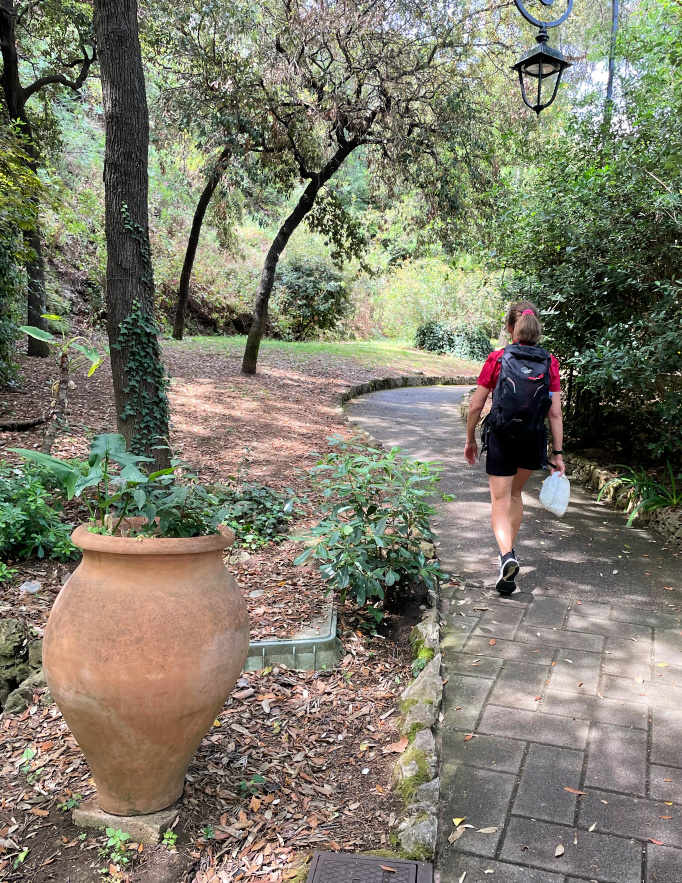 |
| Garden near Palace MC |
We headed to the Oceanographic Museum through the historical district. It was noon, and we opted for lunch before visiting the museum. The rooftop restaurant was already packed with families. Fortunately, were able to get one of the last tables!
The museum was hugely popular. The polar mission exhibition attracted a lot of families and school groups. In the aquarium, it was sometimes hard to move around! You could indeed spend a full day in the museum.
We, however, had the ascent back to La Turbie waiting for us. We took the shortest route to the railway station, and in fact walked a few hundred meters inside the station before starting to ascend in Beausoleil along the same route to signpost #615 where we forked left and followed the GR trail under the north eastern flank of la Tête de Chien (signposts #614, 613, 602) then under Les Hauts de Monte-Carlo straight to La Turbie.
 |
| The Palace Monaco |
 |
| Oceanographic Museum 1 |
 |
| Oceanographic Museum 2 |
 |
| Oceanographic Museum Aquarium |
 |
| Hirondelle 2 ship |
Duration: About 3 hours (hiking time)
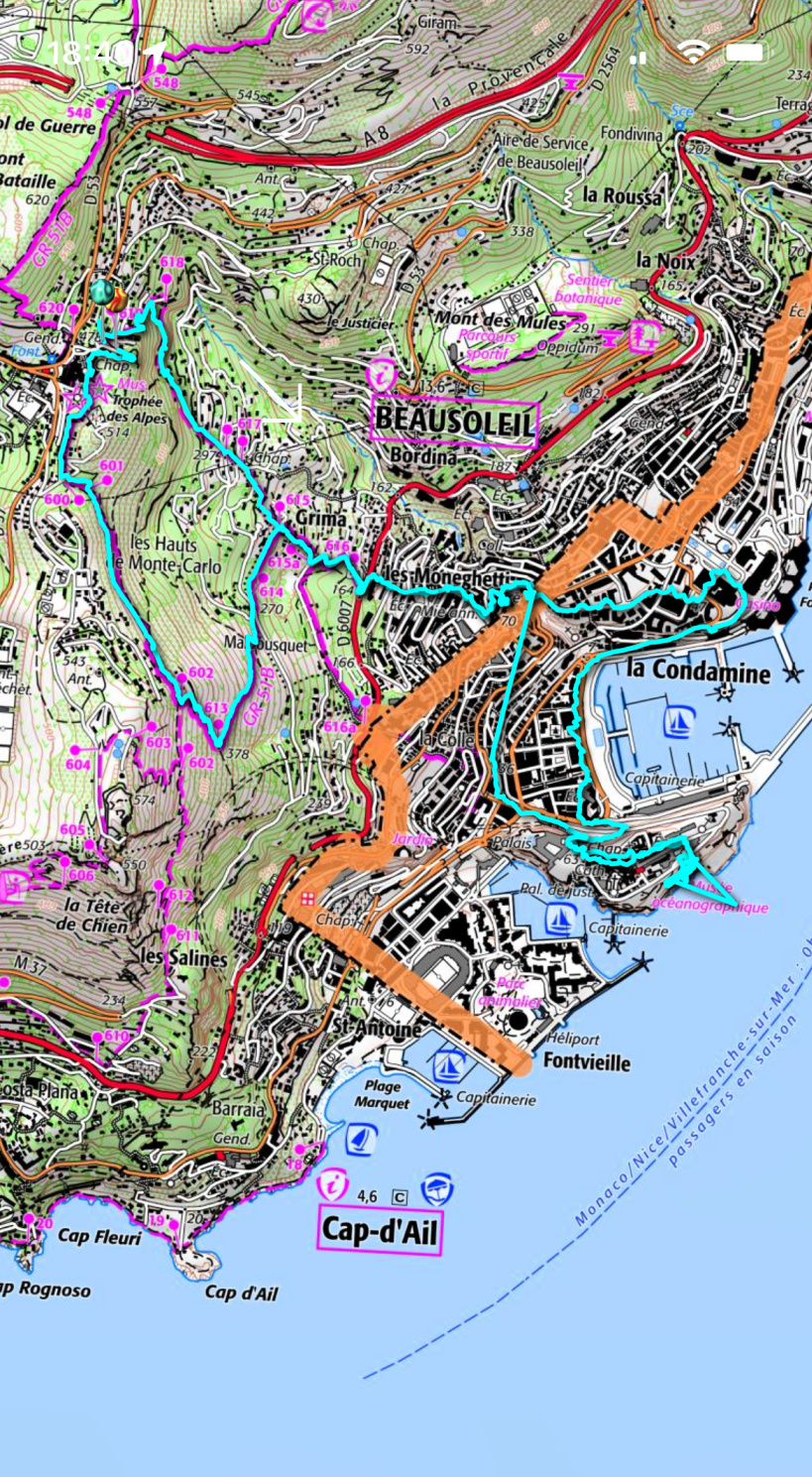 |
| La Turbie to Monaco hike track |
This lemon tagliatelle recipe is perfect to make in spring when fresh basil is again available and tasty local lemons are still in season in Nice. Serve the pasta with some anchovies or chopped Parma ham for a simple but tasty lunch.
2 servings
Whole wheat tagliatelle for 2 servings
2 handfuls of grated parmesan
A generous handful of chopped basil
Juice and zest of 1 organic lemon
Olive oil
Freshly ground black pepper
A small tin of anchovies
In a small bowl, soak the anchovies in water for about 10 minutes to remove some of the salt. Spread on kitchen paper to dry.
Grate the parmesan, set aside.
Zest and juice the lemon into a bowl. Add 1 tbsp. very good and tasty olive oil, some black pepper, and the chopped basil. Mix into a basil pistou, thick basil sauce.
Cook the tagliatelle, drain and divide into bowls. Fold in the parmesan with a fork. Place the lemon pistou in the centre and divide the anchovies around it.
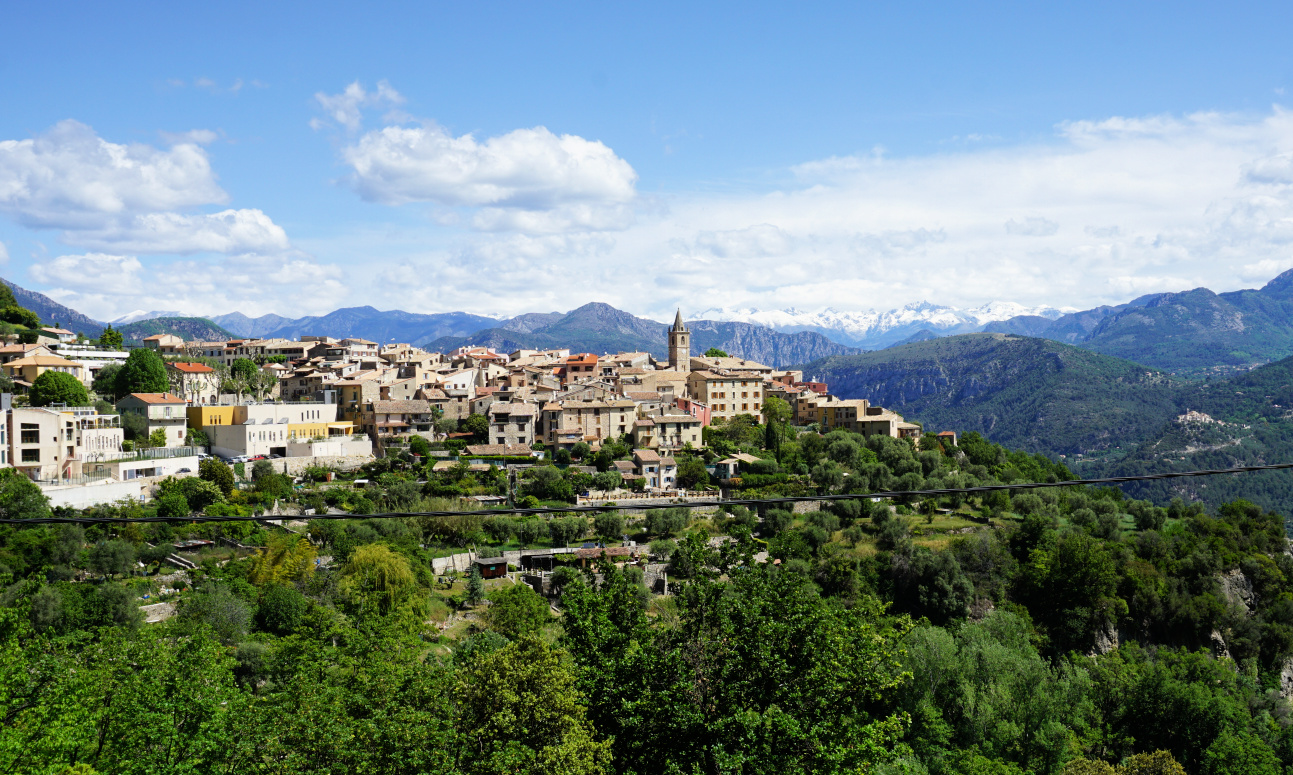 |
| Le Broc and Mercantour peaks |
Our original plan was to visit the museum in the castle in the old village of Carros (parking 350 m) before the walk. The opening hours, however, were a bit odd, starting at 1130 am so we did not want to wait over one hour but headed towards Le Broc (450 m).
 |
| Var Valley seen from Carros |
 |
| Alley in Carros Village |
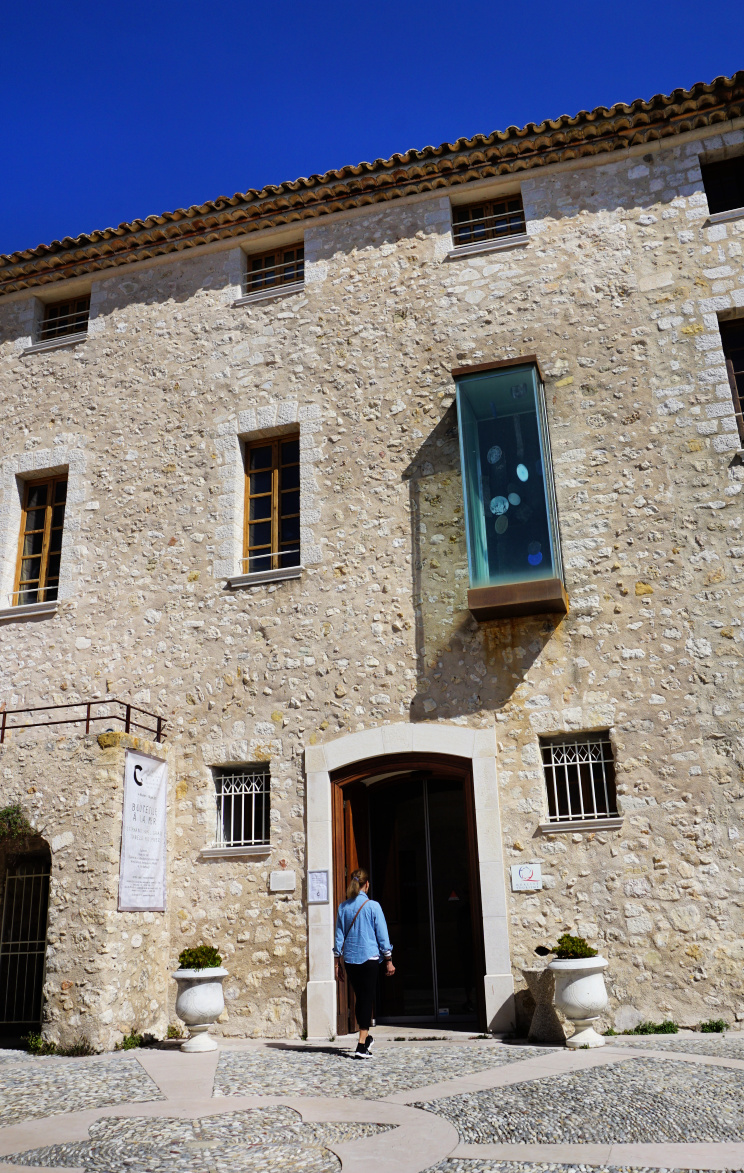 |
| Chateau in Carros Village |
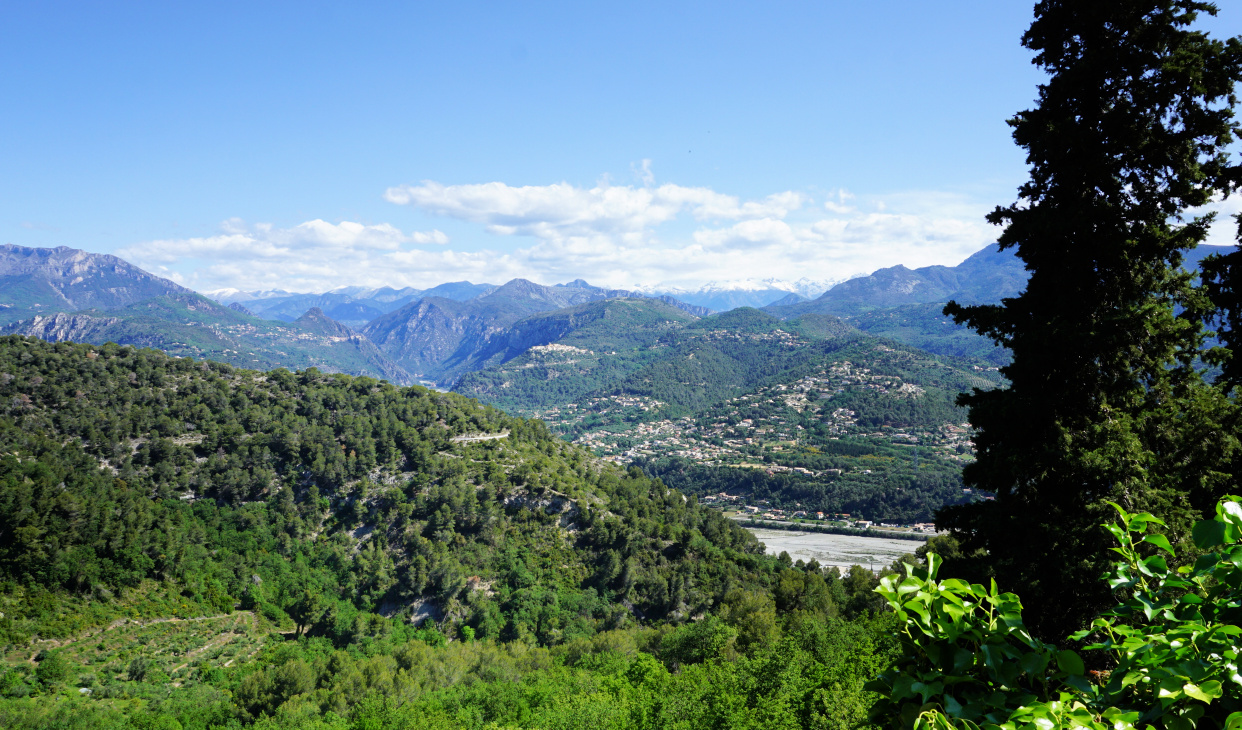 |
| View northeast from trail to Le Broc |
We followed the direct route, first along the paved Chemin du Claret to Chapelle St. Sebastien (about 470 m). Traffic was light, mostly to local properties. After the chapel, the trail continued as a dirt road, with impressive views down to the Var River Valley and beyond. The itinerary was straightforward, even signposted and marked with yellow. From the trail, we could admire the white Mercantour peaks contrasting the spring greenery around us.
After the long drought, the region had had some recent rain, and the artificial Lac du Broc visible from our itinerary apparently had now somewhat more water compared with the images from last autumn. Even so, the current level of the lake reflecting the ground water situation is still considered critical.
 |
| Lac du Broc |
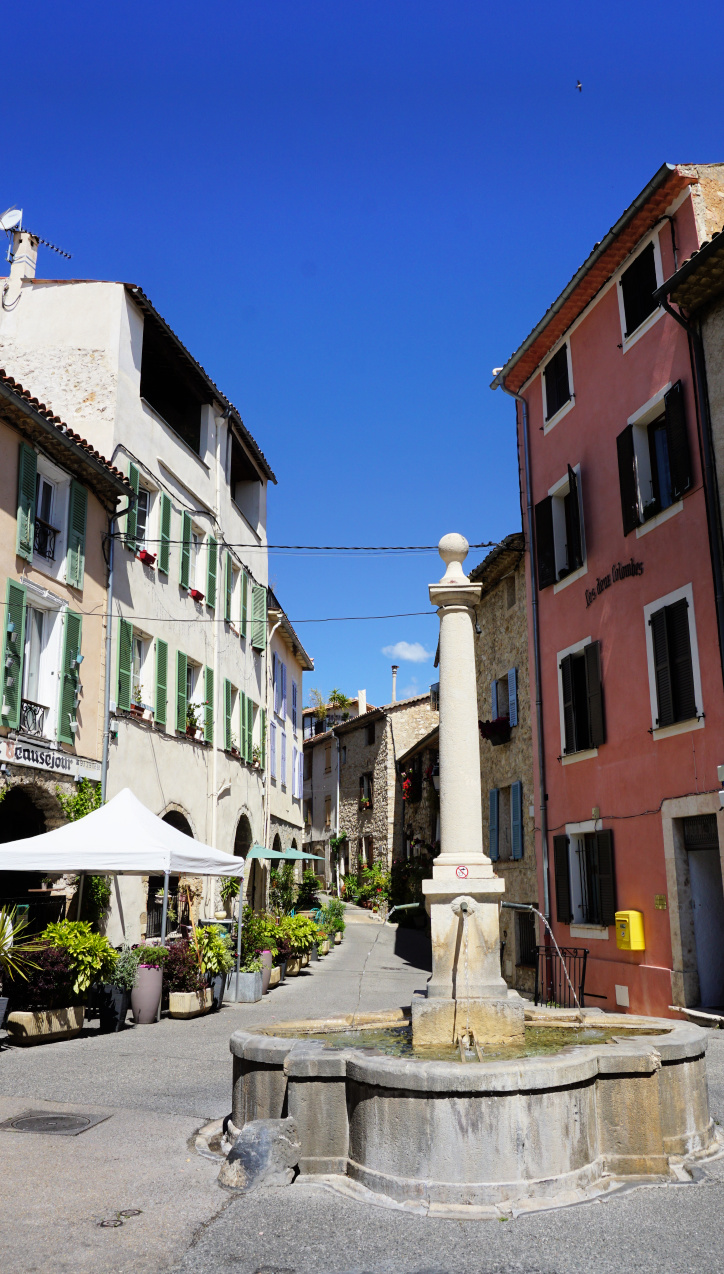 |
| Le Broc La Fontaine |
 |
| Le Broc town hall |
 |
| Roses in Le Broc |
 |
| Narrow alley in Le Broc |
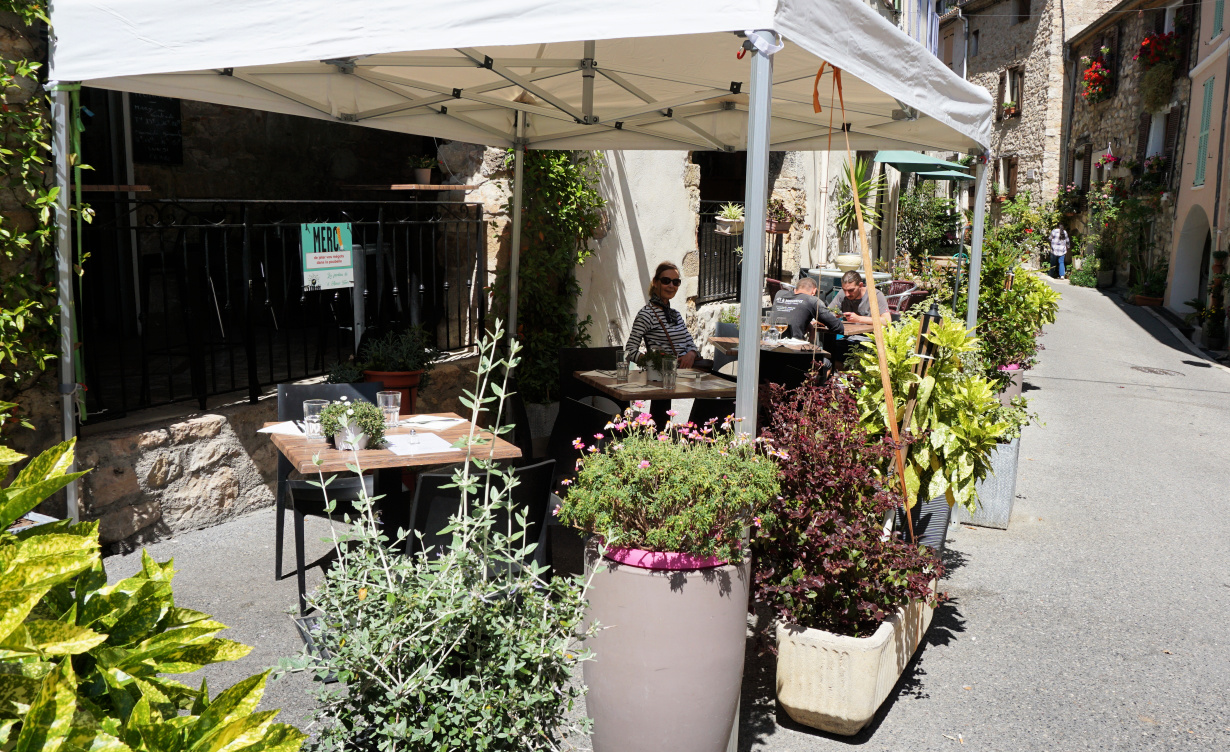 |
Bar in Le Broc
|
The village of Le Broc was quiet on the day of our visit. We strolled around the narrow well-maintained streets. Some businesses were closed at lunchtime.
We had lunch among the locals on the terrace of a bar on the Place de la Fontaine. It was a simple lunch omelette, frites, salad and a glass of rosé. The food was tasty and made from fresh ingredients, and the price level was totally different from the busy coast.
All in all, it was a quiet easy walk between two perched medieval villages.
Climb: About 200 m with some walking in both villages
Duration: 2 h stops not included
Some previous hikes and walks in the same area:
http://www.activefrenchriviera.com/2019/01/mouton-danou-from-le-broc.html
http://www.activefrenchriviera.com/2017/02/new-loop-trail-above-carros-village.html
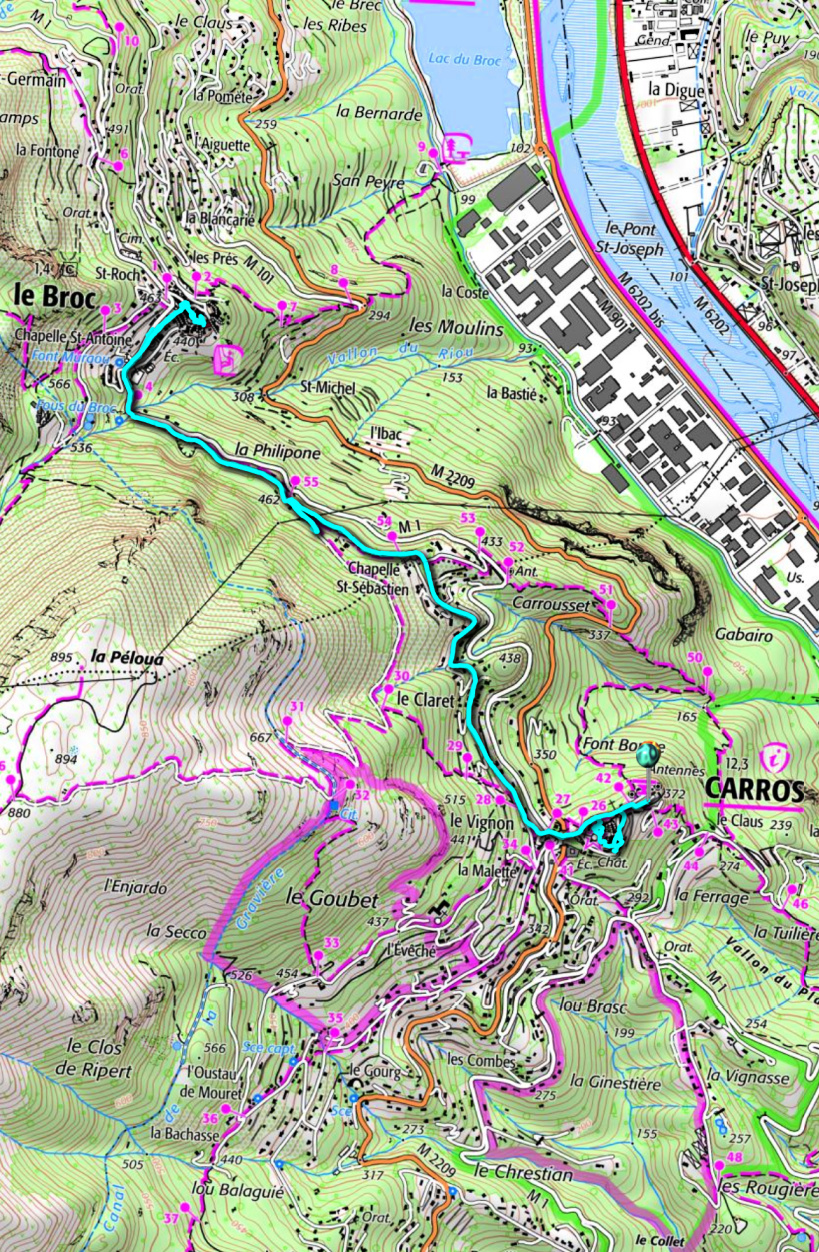 |
| Carros to Le Broc walk |
This simple but tasty vegetable stew goes well with some meat or chicken. In the photo, it is served with veal chops.
2 servings
1 leek, cut into about 1,5 cm pieces with
1 red bell pepper, cut into about 1,5 cm chunks
1 green bell pepper, cut into about 1,5 cm chunks
1 clove garlic, minced
1 tsp. dried Provençal herbs
2 tbsp. olive oil
2 tbsp. balsamic vinegar
Freshly ground black pepper
Chopped parsley
In a sauté pan, warm the olive oil over medium heat. Add the leek and bell peppers and stir well. Add the garlic and Provençal herbs. Cover the pan and cook for 10 minutes, stirring occasionally.
Add the balsamic vinegar and cook for a further 10 minutes without the lid. Add the black pepper and sere decorated with chopped parsley.
 |
| Escoffier Museum entrance |
Saturday morning was sunny after the previous night’s thunderstorms. It was a market day in the old village of Villeneuve-Loubet, and it was bustling. We had to park a bit further, near the Pôle Culturel on the other side of the river Loup.
We followed a nice pedestrian path named Balade Escoffier to the town hall. It was a 10-15 min. walk. We used a footbridge to cross the river. After having checked the market, we headed to the nearby Escoffier Museum.
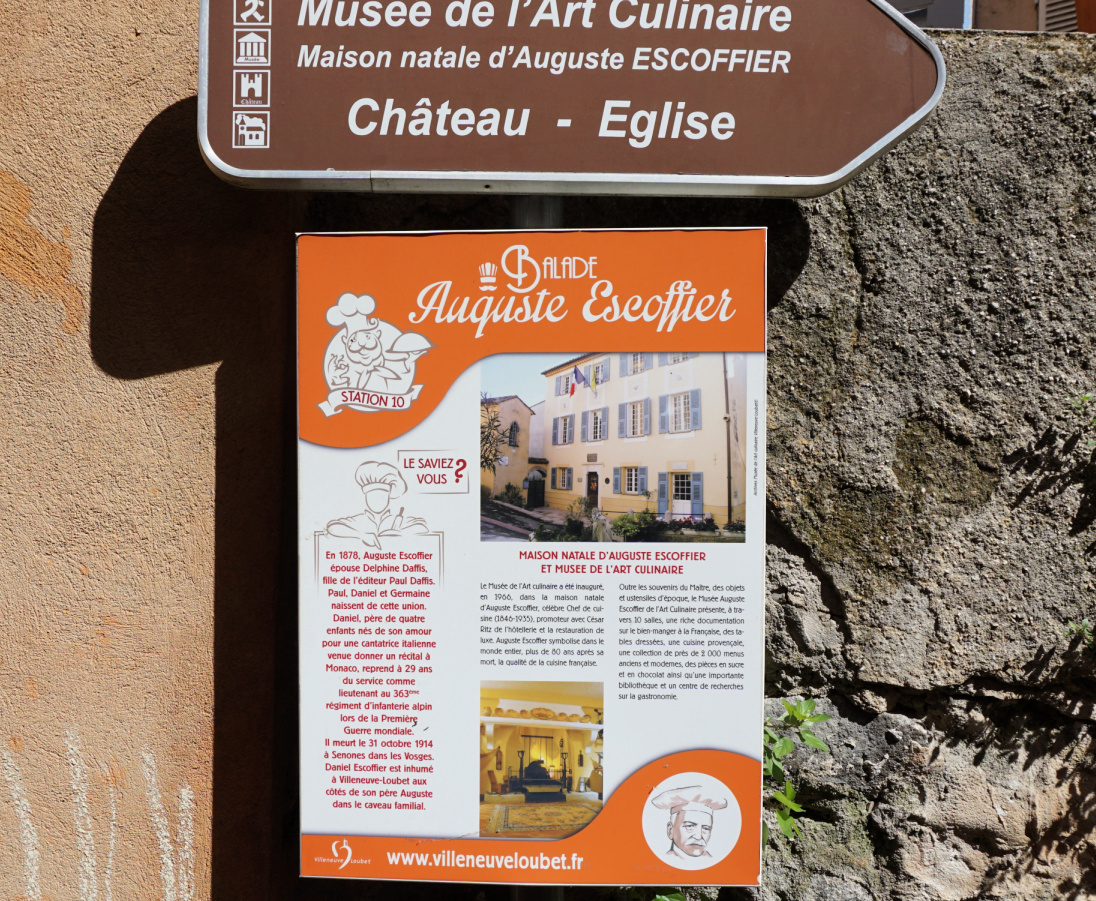 |
| Balade Escoffier guide |
 |
| Along the Loup River |
 |
| River Loup |
 |
| Footbridge over River Loup |
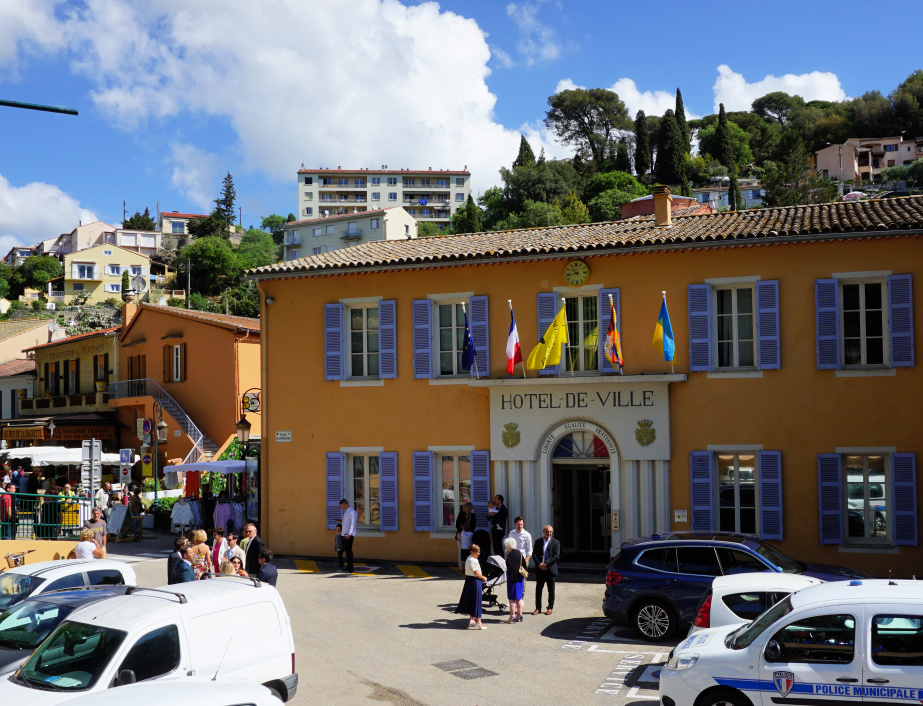 |
| Town hall Villeneuve Loubet |
Auguste Escoffier (1846-1935) is considered the father of modern French gastronomy. He popularized and modernized traditional French methods. The house where he was born is now a museum, run by the Auguste Escoffier Foundation.
The well-kept museum itself is not big. The first room displayed kitchen paraphernalia related to cooking of Escoffier’s era as well as a summary of his life and career. There were rooms dedicated to various desserts and menus from renown restaurants from both his era and more modern times.
 |
| Auguste Escoffier |
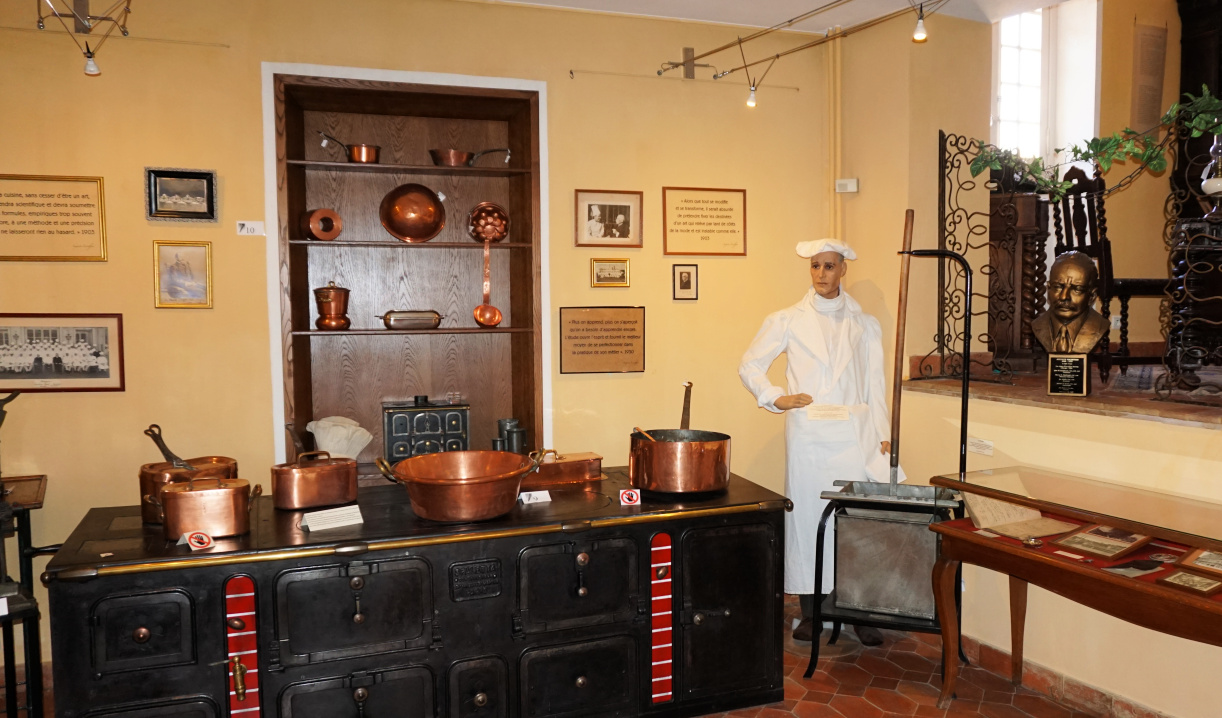 |
| Inside Escoffier Museum |
 |
| Escoffier career timeline |
 |
| Desserts Escoffier Museum |
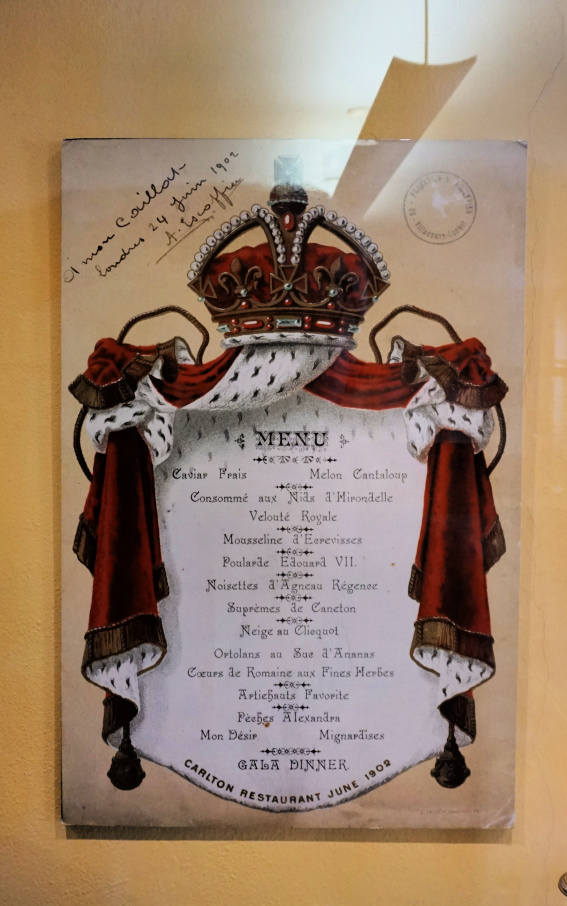 |
| Carlton menu 1902 |
After the museum, we ascended along Rue Escoffier above the village to a viewing point next to the church. The medieval fortress on the hilltop was closed, tours on Wednesdays only during the peak summer period. We completed our visit with a leisurely lunch at Place de Verdun near the town hall.
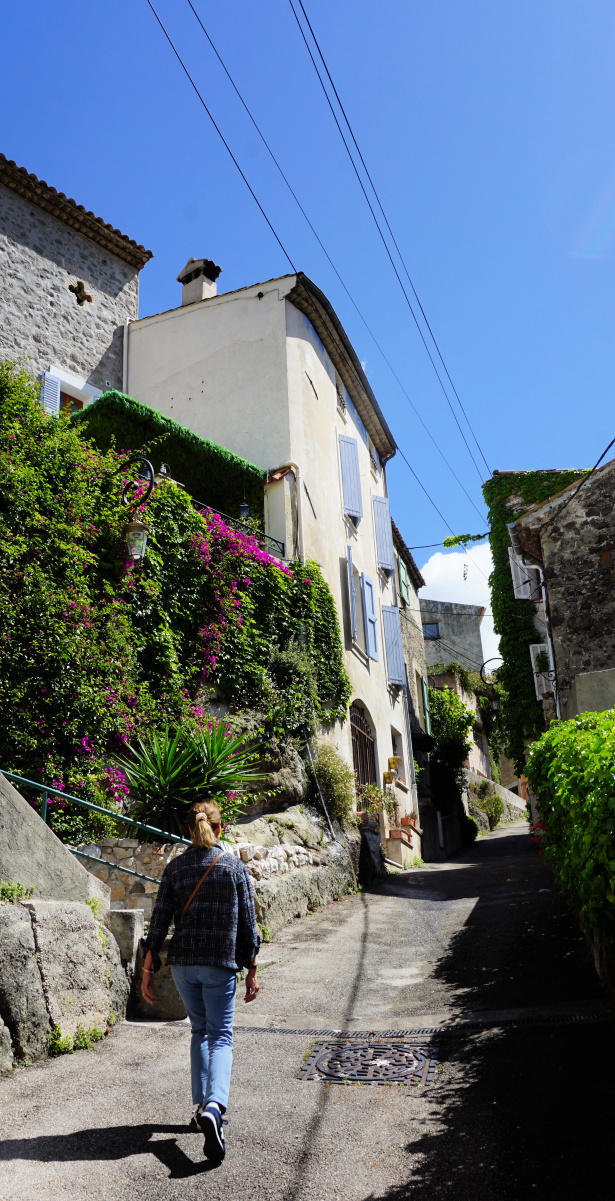 |
| Rue Escoffier |
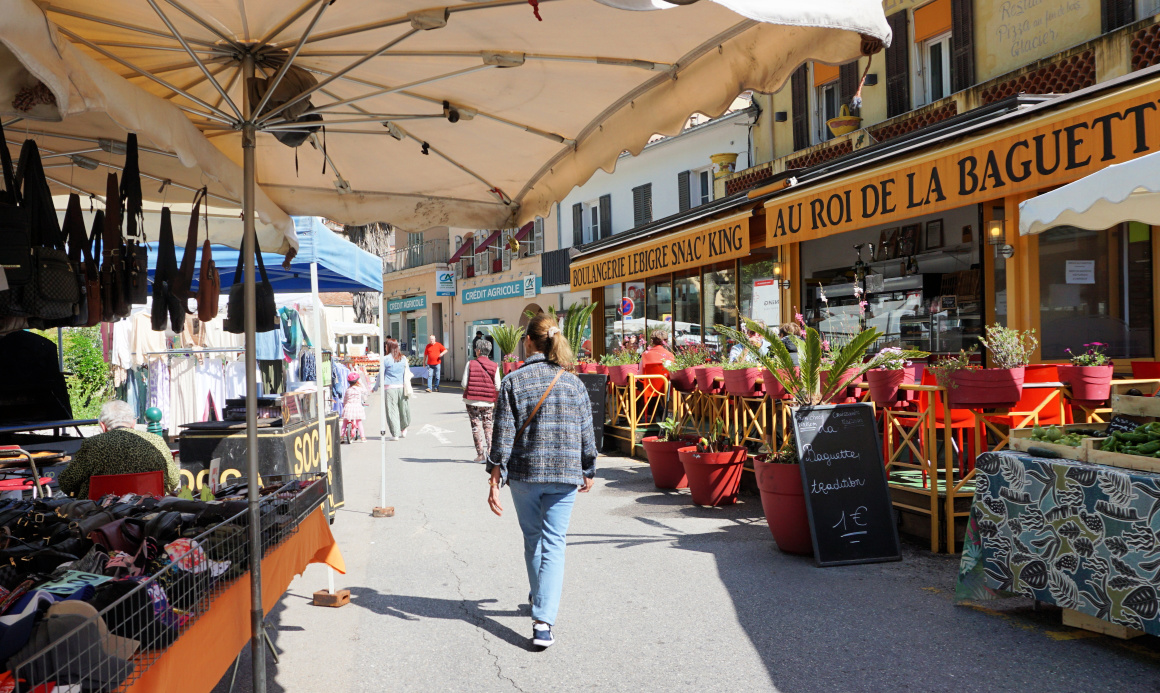 |
| Saturday market Villeneuve Loubet |
 |
| Market stand Villeneuve Loubet |
This recipe is my twist of saffron sauce using healthy Mediterranean ingredients, no butter or cream needed.
The sauce goes well with fish and seafood and is also nice with pork chops and chicken legs. In the photo, the sauce is served with quickly roasted scallops, black rice, and steamed broccoli.
2 servings
1 shallot, minced
1 clove garlic, minced
Olive oil
150 ml chicken stock
100 ml white wine
1 tbsp. balsamic vinegar
A pod of saffron pistils
Juice of ½ lemon
Freshly ground black pepper
Warm 1 tbsp. olive oil in a saucepan over medium heat and sauté the shallot and garlic for 5 minutes. Add the chicken stock, white wine, balsamic vinegar, and saffron and cook until reduced by about half. Before serving, add the lemon juice, black pepper, and whisk in 1 tbsp. really good and tasty olive oil.


































































